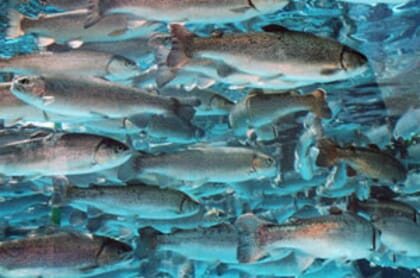So conclude the authors of a new study, who have conducted a trial to investigate the impact that swimming exercise and dissolved oxygen (DO) levels in intensive aquaculture facilities have on fish health. The authors claim it is the first such study to examine both variables in combination, and their potential interaction, for Oncorhynchus mykiss.

They note that both swimming exercise (usually measured in body lengths per second, or BL/s) and DO can be readily controlled in modern aquaculture systems; and they therefore sought to evaluate the effects of these variables, separately and combined, on several outcomes in rainbow trout including growth performance, fin health and survival.
In the trials 18g rainbow trout fry were stocked into 12 circular 0.5 m3 tanks, provided with either high (1.5–2 BL/s) or low (approximately 0.5 BL/s) swimming exercise and high (100% saturation) or low (70% saturation) DO, and grown to approximately 1 kg.
The authors explain that by the time the study came to an end higher DO was independently associated with significantly (p < .05) increased growth performance.
Significant differences were not noted in other outcomes, namely feed conversion, condition factor and mortality, although caudal and right pectoral fin damage was associated with low oxygen and low swimming exercise treatments respectively. Cardiosomatic index was significantly higher among exercised fish.
As a result they conclude that: "swimming exercise and DO at saturation during the culture of rainbow trout can be beneficial to producers through improved growth performance and cardiac health. Facilities utilizing salmonids and other species with a high metabolic scope and positive rheotaxis may benefit by maintaining dissolved oxygen at saturation and providing moderate swimming exercise in the right balances."
Further information
The full study, which was published in Aquaculture Research under the title “The effects of swimming exercise and dissolved oxygen on growth performance, fin condition and survival of rainbow trout Oncorhynchus mykiss”, is available here.




